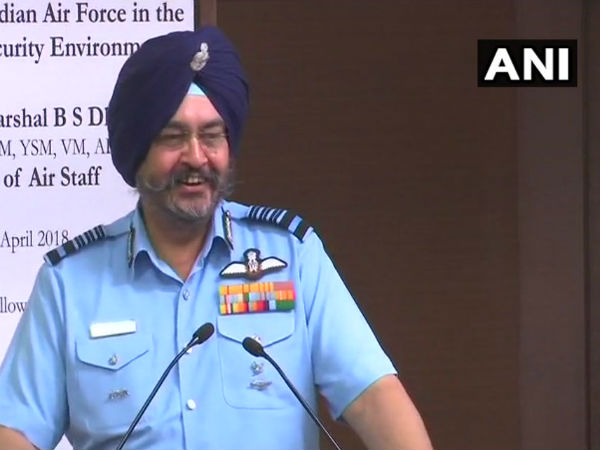By Shaurya Karanbir Gurung, ET Bureau I 27 April 2018:

Air Chief Marshal B.S. Dhanoa. (Google file photo)
In the backdrop of Prime Minister Narendra Modi’s China visit to meet Chinese President Xi Jinping, Indian Air Force Chief Air Chief Marshal B S Dhanoa here today said that a significant increase in Chinese aircraft and aircrew has taken place in the Tibet Autonomous Region as compared to other military regions. He added that China’s deployment of its Sukhoi-27 and J-10 fighter aircraft fleets for continuous operations during winter months gives them a “year round capability”.
This is an important development because in the past China would only occupy forward airfields during the summers. While sharing this development at a talk on the role of the IAF in the changing security environment conducted by the Vivekananda International Foundation, Dhanoa gave out a warning that India has to plan according to its adversary’s capabilities, because “intentions may change overnight”.
He elaborated on the growing capabilities of the Chinese air force in Tibet. “Over the past few years we have seen a significant increase in aircraft and aircrew in the Tibet Autonomous Region from other military regions. The deployment of Sukhoi-27 and J-10 fleets for continuous operations during winter months affords them a credible year round capability. Earlier, many years back they only used to occupy the airfields during the summers.”
The IAF chief also explained the improvement made by the Chinese air force. “China has developed a modern air force that relies on quality rather than quantity, as we saw in the decades of the 1980s and 1990s… It is the world’s fastest growing air force and second in the world in terms of combat air power,” he said.
The modernisation plans of PLA Air Force will ensure that more than 50 per cent of its fleet will comprise advanced multi role combat aircraft, he said. “It has a credible mix of multi role fighter and strike aircraft. They have got adequate reserve to replenish after attrition. They have multi-layered air defence systems and rocket forces that allow him (read as China) to fight a ground campaign without a decisive air victory,” Dhanoa added.
The modernisation plans of PLA Air Force will ensure that more than 50 per cent of its fleet will comprise advanced multi role combat aircraft, he said. “It has a credible mix of multi role fighter and strike aircraft. They have got adequate reserve to replenish after attrition. They have multi-layered air defence systems and rocket forces that allow him (read as China) to fight a ground campaign without a decisive air victory,” Dhanoa added.
He, however, also pointed out some of their disadvantages. “For them, the geography works against them especially in the Tibet Autonomous Region. They have an inherent operational disadvantage due to altitude, very cold temperatures and presently as we see lack of basic infrastructure to protect their aircraft on the ground,” he said.
Dhanoa, meanwhile, also highlighted the strength of the Indian Air Force. “The IAF is the largest air force among Asian democracies and has the capability to respond fastest,” he said.
He explained that the relationship between the two air forces is friendly. “Both sides respect air force confidence building measures. During exercise GaganShakti, which just concluded, there was a lot of flying from our side and some monitoring from their side. But there were nil air violations from both sides,” he said.
He added, “I told my counterpart during Aero India…the chief of staff of western theatre command, chinese air force, that let us meet more on the ground, so that we don’t have to meet each other in the air.”
(Read original story here)